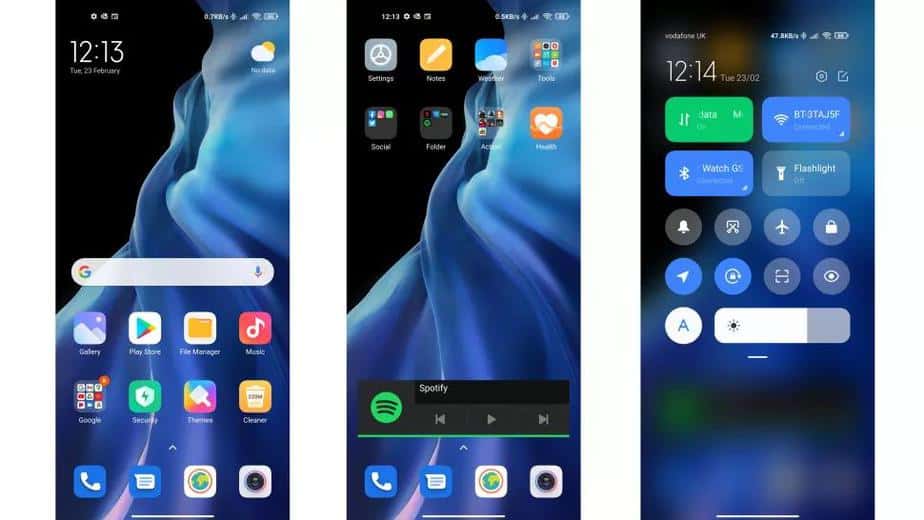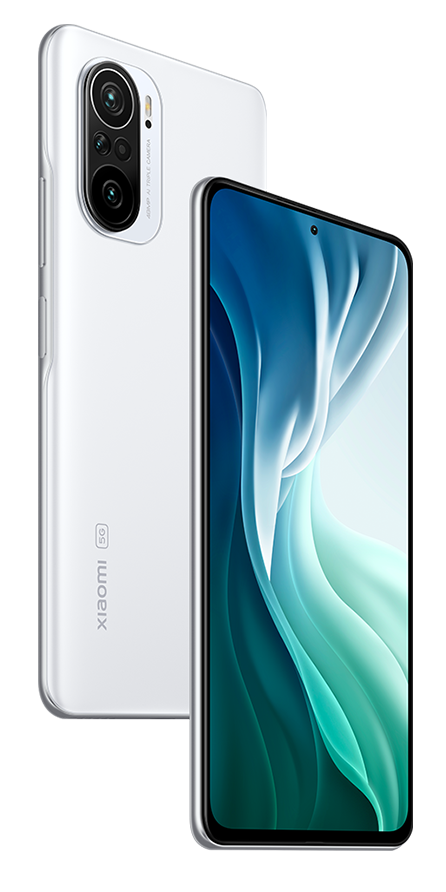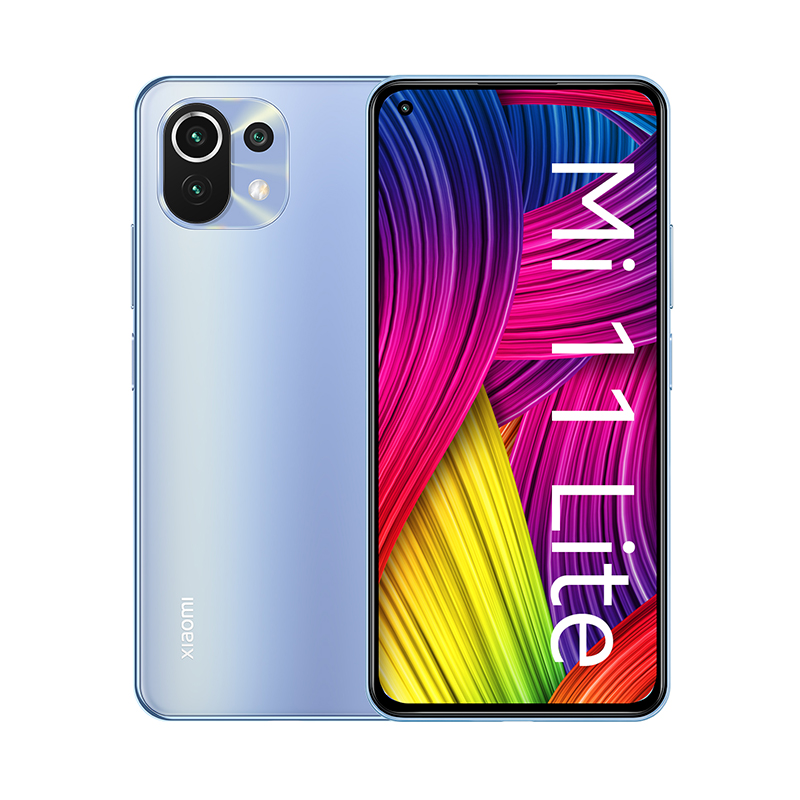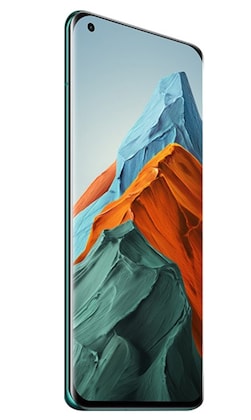Flagship smartphones have been creeping up in price with models that can cost well above 1000 dollars. But not everyone needs a bleeding edge, top-of-the-line smartphone and not everyone can afford them. For most people, a fast, well-built smartphone with good cameras and features at a reasonable price tag is all they ask.
Check out our Xiaomi Mi 11 Review for all the details.
Related: Mi 11 Ultra Price and Review
Let me cut to the chase, I love smartphones with beautiful screens, which are fast, powerful, equipped with cameras that don’t disappoint me. The Xiaomi Mi 11 claims to tick all these boxes, so let's find out if it's true. This is a review of the Mi 11, and I am excited, to say the least.
After having reviewed the Xiaomi Mi 11 based on various factors like design, performance, features, functions, camera, price, and much more; my team and I found that:
The Mi 11 is the best flagship smartphone of 2022. It comes with a 6.81″ QHD+ AMOLED 10-bit display in addition to a refresh rate of 120hz. The Mi 11 also is equipped with three cameras and the latest Qualcomm Snapdragon 888. Most importantly, it comes with the MIUI 12.5 skin based on Android 11.
Xiaomi Mi 11 Review

Specifications
| Display | 6.81″ QHD+ AMOLED 10-bit display120Hz refresh rate |
| SoC | Qualcomm Snapdragon 888 |
| RAM & Storage | 8GB LPDDR5 + 128GB UFS 3.18GB + 256GB12GB + 256GB |
| Battery & Charging | 4,600mAh |
| Rear Camera(s) | Primary: 108MP Secondary: 13MP sensor Tertiary: 5MP |
| Front Camera | 20MP |
| Connectivity | NFC, Wi-Fi 6, IR Blaster |
| Software | MIUI 12 based on Android 11 |
Design and Build

A sleek and sexy design is a must for a premium phone. Similarly, a durable design is a requirement for a phone priced at 750 dollars. The Xiaomi Mi 11 ticks both these boxes and even excels in the design category. Check out our Xiaomi Mi 11 Review for all the details.
What caught my eye the most is the vegan leather option of the Xiaomi Mi 11. It looks premium and feels great in the hand too. The vegan leather option is also less of a fingerprint magnet compared to the glass backs on other flagships.
Xiaomi has sandwiched the Mi 11 between Gorilla Victus glass on either side with an aluminum frame oozing through the middle. The aluminum frame holds it all together for the glass back models. The vegan leather model is a specially developed material that gives a fresh look while being more practical too.
Another notable design feature is the beautifully curved screen. While some may despise curved screens due to poor ergonomics, I don’t. I like curved screens as they reduce bezels, and the phones themselves look more premium and this is true in the case of the Xiaomi Mi 11.
While the design is exceptional, Xiaomi’s Mi 11 loses brownie points on excluding a headphone jack but gains some by including an IR blaster. While it’s a sad reality that the headphone jack is dead from premium flagships, at least the IR blaster offers some solace for the Mi 11.
The design of a phone is a subjective matter, what some may love, others could hate, but for me, the Xiaomi Mi 11’s design is right up there with the best in the smartphone industry and I adore it. The build quality of a smartphone is not subjective and kudos to Xiaomi for delivering a beautiful yet durable smartphone.
Display
Flagships need flagship-class displays, and Xiaomi delivers one of the best displays you can get on a smartphone with the Mi 11. Many overlook the displays but they are one of the most important elements of a smartphone as they are the primary source of input and output. Check out our Xiaomi Mi 11 Review for all the details.

Mi 11’s display is a breathtakingly beautiful masterpiece to look at. It doesn’t just look great; it feels great to use too, thanks to its 120 Hz refresh rate. The 6.81-inch display comes with a QHD (3200x1440p) AMOLED panel with a peak brightness of 1500 nits for the best HDR experience possible in a smartphone.

The display is curved on all 4 sides also comes with a 10-bit panel supporting more than a billion colors. Even though the colors are amazing, I can't stop raving about how joyful it is to use, the 120 Hz refresh rate with 480 Hz touch sampling is ‘chef’s kiss.’ It is a sight and an experience to behold.
Performance
To be the best smartphone on the block, you need the best guts to battle it out. And the Xiaomi Mi 11 is more than well equipped to take on any smartphone. It is a beast being the first phone to sport the new Snapdragon 888. Check out our Xiaomi Mi 11 Review for all the details.
It performs exceptionally well, even taking the fight to the iPhone 12 lineup. The powerful Snapdragon 888 is paired perfectly with high-speed 8/12 GBs of LPDDR5 RAM to make sure you never face any hiccups. Along with up to 256 GBs of UFS 3.1 storage, you will never feel let out when it comes to the performance of your new flagship device.

In my testing, the Xiaomi Mi 11 flew through all the games and benchmarks I threw at it coming on top against every android phone while trading blows with the iPhone 12’s A14 Bionic. It is the fastest Android smartphone right now.
Software
The software has always been the Achilles heel of Xiaomi phones in my opinion. While they have come a long way with a lot of useful features, I would still choose stock Android, OnePlus’s OxygenOS, or Samsung’s One UI over Xiaomi’s MIUI.
That being said, the software is also subjective as many users love, and swear by MIUI as the best UI. And MIUI does offer a lot of features, to the point that it can be overwhelming. I have learned to like the looks of the UI and love some of the nifty little features like unlimited customization options, widgets, and always-on display mode.

Mi 11 ships with MIUI 12.0 out of the box. It is a far cry from stock Android, and this can make or break the deal for some. The software is not as bloated as some of the cheaper Xiaomi phones, it is still flawed with bugs and other issues. These include reverting of live wallpapers, chat bubble issues, and a blue light filter mode that won't turn off.
All of these issues can be fixed via an OTA update but it is frustrating to see your new flagship plagued with such software bugs. And you are stuck with MIUI’s look unless you root the phone. So, the software of the Xiaomi Mi 11 can be a dealbreaker or a USP depending on the person. Check out our Xiaomi Mi 11 Review for all the details.
Camera

Manufacturers like Apple, Samsung, and Google have been at the forefront of smartphone cameras, while Xiaomi, Huawei, and OnePlus have had to play catch up. But not anymore and the Xiaomi Mi 11 is the proof for it.
Mi 11 boasts some impressive camera specs, and these translate into pictures that are detailed, color-accurate with a good dynamic range on the main camera. The ultrawide is also a great option for group shots. My only complaint is the macro lens, Xiaomi could have used a zoom lens instead of a macro for more versatility.

Video recording capabilities of the Mi 11 are exceptional with up to 8K 30 FPS recording. The sweet spot here is the 4K 60 FPS recording which delivers smooth, detailed videos that are a joy to watch. Xiaomi’s camera app also comes with some cool features to make movies, it is worth trying if you are someone into filmmaking.

Finally, the selfie camera is a 20 MP sensor, which is capable of providing some detailed shots but remember to turn off the beauty mode, or else you will look like a doll as it smooths out every facial detail.
Overall, the Xiaomi Mi 11 comes with competent cameras for a flagship phone taking the fight to Samsung and Apple. The cameras are exceptional when you factor in the price, Mi 11 punches well above its weight class. This only excites what Xiaomi has in store for the more expensive Mi 11 Ultra.
Battery
Like software, Xiaomi let me down in the battery department this time out. While software issues like bugs are fixable, the battery is not. Mi 11 comes with a 4600mAh battery which is not small by any means but it doesn’t last long much either.
The reasons are high power usage from the screen and the new powerful Snapdragon 888. I suspect that the battery life can be improved slightly by a few software changes, but it will still be underwhelming compared to other flagships.
Xiaomi still has one trick up its sleeve though and that is fast charging. The Mi 11 comes with 55W fast charging capability.
Ridiculously Fast 50W Wireless Charging
That’s right, it is now a typo, the Xiaomi Mi 11 comes with 50W wireless charging which can top up the battery in minutes compared to hours offered by other flagships. So, even though you lose out on battery life, you can make that up by juicing up your battery by just placing it on a wireless charging pad for a few minutes.
This is great since wireless charging is the future of smartphones and Xiaomi is already offering you a glimpse of the future with the Mi 11.
Xiaomi Mi 11 vs Xiaomi Mi 11x
The Xiaomi Mi 11 as we know, has very few compromises, but its younger sibling, the Mi 11x is a cutdown version of it. For the Mi 11x to hit its price point, it has to make some compromises.

The Mi 11x features a slower processor compared to the Mi 11. The Mi 11x runs on the Snapdragon 870 compared to the newer and faster Snapdragon 888. But you should know that the Mi 11x is still plenty fast for pretty much everything as the Snapdragon 870 is one of the fastest mobile processors.
Overall, if you are a power user and want as much performance as possible then the Mi 11 is better.
The next major difference between the two smartphones is the screen. While both Mi 11 and Mi 11x feature AMOLED screens, the flagship Mi 11 has a better display. Mi 11 sports a 1440 x 3200-pixel screen, while the Mi 11x uses a 1080p class display. The Mi 11's screen is a 10-bit panel, which means it can display more colors.
Both phones can display at up to 120Hz but the more premium Mi 11 can do higher brightness. The smaller and even bezels around the Mi 11 make it a treat for content consumption.
The Mi 11 has a 91.4% screen-to-body ratio, while the Mi 11x has an 85.9%. and finally, the Mi 11 uses Gorilla Glass Victus to protect the screen, which is better than the Gorilla Glass 5 found on Mi 11x.
Cameras are also an area where both smartphones differ quite a bit. The Xiaomi Mi 11x is significantly worse than the flagship Mi 11 which is to be expected. The 48MP primary sensor of the Mi 11x performs well in daylight and natural lighting while it struggles in nighttime or under artificial lighting.
The Mi 11x has a good 8 MP Ultrawide and a 5MP Macro for the price, both of which add versatility if you need them. The Mi 11x doesn't have OIS so it is considerably worse when it comes to video recording compared to the Mi 11.
For selfies, both smartphones feature the same cameras, so they perform the same too. Overall, the camera performance of the Mi 11x is worse than Mi 11, but for its price, it does hold up well.
The Mi 11x features some decent battery specs. It is powered by a 4520 mAh battery that can charge at 33W. It doesn't have wireless or reverse charging capabilities. The Mi 11 on the other hand, has a slightly bigger battery along with faster wired charging and support for wireless and reverse charging.
Some other features that the Mi 11x lacks compared to Mi 11 are NFC, under-display fingerprint sensor, Bluetooth 5.2, and aptX support.
Overall, both phones are excellent for their respective prices, but the Mi 11 offers a more complete Flagship experience. I would recommend you to choose the Mi 11 if your budget is flexible, if not the Mi 11x should keep you happy with powerful performance, decent cameras, and good battery life.
Xiaomi Mi 11 vs Xiaomi Mi 11 Lite
From the name itself, it's clear that the Mi 11 Lite is a significant cutdown version of the Mi 11. While it does cost much less and has worse specs, the Mi 11 Lite is still a good lower mid-range smartphone.

The Mi 11 Lite features a Snapdragon 732G processor, that offers just a fraction of Mi 11's performance but the phone also costs a fraction. While the Mi 11 Lite won't wow anyone with its mediocre performance, it will surely turn heads with its amazing display.
The 10-bit AMOLED panel is stunning to look at. It is only a 1080p panel and has a peak brightness of 800 nits, which is much less than Mi 11, but it still is a stunner. The Mi 11 Lite has support for 90Hz making it a good upgrade over 60Hz screens.
And for cameras, the Mi 11 Lite is surprisingly good for its price tag. It features a 64MP wide primary lens that is excellent in well-lit conditions. It struggles a bit in low light, but it is easily one of the best in its price range. The 8MP Ultrawide and 5MP Macro add some versatility while not being useless. And the 16 MP wide selfie lens is great for selfies though it features too much post-processing.
Overall, for the price, the Mi 11 Lite is an excellent device, and if you want some extra performance, getting the 5G version will do you wonders for a little more cash. Mi 11 and Mi 11 Lite cater to different audiences, but both of them are best in their respective classes which is good news for customers.
Xiaomi Mi 11 vs Xiaomi Mi 11 Pro
The Xiaomi Mi 11 Pro is a step up compared to the Mi 11 and hence the Pro moniker in its name. Don't get fooled thinking that the Mi 11 Pro is a huge upgrade compared to mi 11. The Mi 11 Pro is identical compared to the Mi 11 except for a few upgrades in the camera, display, and battery departments.

The Mi 11 Pro features the same display as the Mi 11, but it adds support for Dolby Vision. This is a small upgrade that doesn't affect experience much.
When it comes to cameras, the Mi 11 Pro shakes things up a bit by offering a better 50MP primary wide camera with dual pixel PDAF which makes it much better at night photography. The 13MP Ultrawide remains the same but instead of a macro lens, the Mi 11 Pro uses a Periscope lens that offers 5x optical zoom capability.
This setup is much better and offers more opportunities to get the most out of your smartphone camera.
The Xiaomi Mi 11 Pro uses the same selfie lens as the Mi 11, so nothing exciting here.
And in the battery department, the Mi 11 Pro offers a significant upgrade thanks to the 5000 mAh battery compared to the 4600 mAh cell on the Mi 11. It can charge at 67W both wired and wireless, while the Mi 11 does only 55W and 50W for wired and wireless charging speeds respectively.
The Mi 11 Pro offers some good upgrades over the Mi 11, especially in the camera and battery departments. If you think that the Mi 11's camera or battery life is not good enough for you, then the Mi 11 Pro is a worthy smartphone to consider.
Final Thoughts
If you are looking for a flagship smartphone in 2022, then Xiaomi Mi 11 should be right on top of your list. The subpar software and battery life might be a letdown, but the software can be fixed, and I expect Xiaomi to fix the issues.
And for battery, if you are a light user, then you won't miss much besides you are getting blazing fast charging speeds, wired or wireless.
Apart from that, the Xiaomi Mi 11 is one of the best phones you can buy right now, and the price tag makes it maybe the best deal for a flagship smartphone right now. Get it if you want an amazing screen, a fast phone with excellent cameras.
Also Read:
